October 15, 2020
Theme: Business Entrepreneurship Opportunities and Challengers in the New Normal Era of COVID 19
COVID 19: A Quantum Perspective
Dr. Emiliano T. Hudtohan, Adjunct Professor, Jose Rizal University, Philippines
Abstract
This narrative explores and provides insights on the phenomenon of COVID 19 pandemia, from a quantum perspective. Using a metaphysical lens, it takes into account the Asian-African Conference in Bandung, Indonesia in 1955 which somehow underscores the Butterfly Effect of that event in the 21st Century where Jasmine Foundation gathered in an international forum represented from Indonesia, Malaysia, Philippines, Uganda, and Turkey. A vision of an Asian Management Association for Social Development is being considered. The discourse springs from Chaos Theory, which is manifested by the VUCA world in the Age of Upheaval within the Great Period of Change that is leading us to a Golden Age after the universe has passed through the Black Hole. Personal and Global Empathy are critical values that drive personal and social initiatives as responses to meet the challenges of COVID 19. The pandemia has made humanity realize that we are spiritual beings with human activities and that corporations must shift from profit orientation to concern for wellbeing of all stakeholders. Government of China, India and Indonesia are addressing social concerns by trending a new Mandated CSR.
- Introduction
Sixty-five years ago, the first large-scale Asian–African Conference in Bandung, Indonesia (Konferensi Asia-Afrika) was held by Asian and African states, which were newly independent 1955. They declared that Asia is for Asia and Africa is for Africans. Bandung remains, in colonial history a turning point in world history … [it] was not a miracle … because it was preceded by more obscure meetings, prepared by more modest groupings, that made the first contacts [that] explored their common difficulties. (Assie-Lumumba, 2015). Du Bois (1982) said, “We wish you well and bid you stand staunch and fast for peace and freedom, for an Africa and Asia equal with and independent of Europe and America, standing on its own feet, governing themselves as they decide.” Interestingly, Turkey was there in attendance as witness.
Today, we are gathered for the International Conference Education, Management, Agribusiness, Business Entrepreneurship (ICEMABE) as Asians with representative from Africa and Turkey to address a global common difficulty: the COVID 19. Like the Bandung Konferensi Asia-Afrika, this conference, through the leadership of Dr. Munir and the Jasmine Foundation, we explore our common difficulties and provide concerted common solutions. Bandung conference eventually created the Association of Southeast Asian Nations (ASEAN). This conference can have a Butterfly Effect leading to the creation of Asian Management Association for Social Development (AMASD).
Contrary to the 2015 comment of Assie-Lummumba that Konferensi Asia-Afrika “was not a miracle” It is has been observed that there is an irresistible shift of the global power to the new Asian hemisphere (Mabubani (2008) and that that the ASEAN is a miracle (Mabubani & Sng, 2017)
I thank Dr. Sanihu Munir of Jasmine Education Foundation, Inc., together with Dr. Redentor S. Mariano, Dean, Graduate School and Area Chair, Graduate Studies in Business Administration, Jose Rizal University, Philippines; Dr. Huseyin Ergun, Secretary General of KTO Karatay University, Turkey; Director Encik Muhammad Zubir bin Mohd Hanifah of Politeknik Sultan Azlan Shah, Malaysia and Dr. Andi Bahrun, Rektor of Sulawesi Tenggara University, Indonesia for organizing this Webinar on . Business Entrepreneurship Opportunities and Challenges in the New Normal Era.
The global experience of COVID 19 pandemic did not stop Dr. Munir for conducting his advocacy to conduct annual international seminar on business and education. The pandemia creates new opportunities on how the New Normal of human enterprise will about our creative and innovative response for humanity to move on and become as Nassim Nicolas Taleb (2010) calls antifragile. It means going beyond being robust, strong and unbreakable with an added new quality that we never had before. This is what COVI 19 has done to us. We are antifragile because according to Nietzsche: What did not kill us made us stronger and according to Taleb: What did not kill us killed others. We are then antifragile, resilient and unbreakable but above our humanity is raise to a higher level in this Era of New Normal post-COVID 19 pandemia.
- Objectives
The purpose of the paper to examine the impact of COVID 19 from the lens of the new science of quantum physics. It views the current situation as a manifestation of a VUCA world in the Age of Upheaval during the Great Period of Change (1987-2023). It explores the Chaos Theory and the role of Eros as creativity and innovation to be Antifragile. It discusses Multistream management that pursues Well-being as a new business proposition, other than profit. It promotes Personal and Global Empathy as new normal modes of human relationship. It advocates Personal and Corporate Social Responsibility as imperative initiatives in difficult socio-economic circumstances and it challenges government to promote Mandated CSR among business corporations as a response to COVID 19, in addition to philanthropic CSR.
- Methodology
The methodology of this discourse is qualitative (Marshall & Rossman, 2011), using multi-values (Richardson, 2015) research approaches covering physic, metaphysics, and other social sciences. Thus, it provides an awareness of “the critical role of patterns and context in the achievement of knowledge” (Douglas, 2014) on how COVID 19 has drastically altered our perspective on who critical are our respective singular and corporate roles to the survival of humanity in this planet. It is storytelling (Pallin, 2018) and heuristic (Mustakas & Douglas, 1989) because it narrates critical values and painful lessons learned from COVID 19. It is historical (Bloch, 1962) because it seeks to review the historical perspectives before and after COVID 19 events and their “extended networks of implications” (Douglas, 2014) in promoting social and spiritually driven responsibility. In retrospect, COVID forces us to make prospects (Gonzalez & Tirol, 1984; Hudtohan, 2005)) for a new normal.
- Quantum Perspective
Newtonian Science to Quantum Organization
Physics as modern Newtonian science explained the world of matter as we see and experience it. The importance of materiality has triggered men like Adam Smith to make a dissertation on the Wealth of Nations. But today, the world is seen from the lens of metaphysics, which explores the material world form its minutest details.
Quantum physics is the study of quanta, the smallest particle of matter. Einstein realized that the atomic substructure of the quarks ha energy which is a function of matter and light [E=MC . Thus, we are a bundle of energy connected to the energy of the vast universe. The moment you trust chaos, you see God clearly. Chaos is divine order, versus human order. Change is divine order, versus human order. When chaos becomes safety to you, then you know you are seeing God clearly. (Myss, 2020).
(https://mail.google.com/mail/u/0/?shva=1#inbox/15a32c0df8eda241?projector=1)
James Ray (2006), metaphysicist, has a new concept of God as energy. He says, “Most people define themselves as a finite body, but you are not a finite body. Even under a microscope you’re an energy field. What we know about energy is this. You go to a quantum physicist and you say: What creates the world? And he or she will say: Energy. Well, describe energy. Ok, it can never be destroyed; it always was, always has been, everything that ever existed always exists, it is moving into form, through form and out of form. You go to a theologian and ask the question: What created the Universe? And he or she will say: God. Ok, describe God. Always was and always has bee, never can be created or destroyed, all that ever was always will be, always moving into form, through for and out of form. You see, it’s the same description, just different terminology. So if you think you’re this meat suit running around, think again. You’re a spiritual being! you’re an energy field, operating in a larger energy field.” (Quoted from Byrne, 2006, p. 158-159).
The pandemia of COVID 19 has forced us to dig deep into the meaning of who we are and who our God is. Suddenly, we realize that we are divine (Walsch, 2014; 2018), that we are spiritual beings with human activities. Suddenly, our perspective makes a shift: we are spiritual beings with energy field. According to Dr. Dispenza, the ‘old-school’ classical Newtonian version of an atom is focused primarily on the material, whereas “the ‘new-school’ quantum version of an atom with an electron cloud describes the atom as 99.99999 percent energy and .00001 percent matter.
Figure 1. Atom viewed by Physics and Quantum Physics
(http://iquim.org/spring-back-school-special-2016/)
Our spiritual and metaphysical existence give us confidence that we have power and energy, originally designed by the Maker to function with greatness to face challenges, never before presented to us. Can we change our perspective then? From diagnosis [die-agnosis] of COVID 19 to livingnosis [life process] in dealing with this pandemia? Can we use our energy to promote the idea that Thoughts become Things? Do we believe in order see the positive results of our efforts to defeat COVID 19 or do we wait to see in order to believe? Do you believe that you are a spiritual being with human activities? (de Chardin, 1993).
Quantum Organization
While he considered empathy in his outlook, the attraction of many was focused to rugged interpretation of one’s right and freedom to make money. Thus, mainstream capitalism is securely anchored on profit. Dyck and Neubert (2012) tempered this greedy view on business and proposed a multistream perspective of focusing on Wellbeing. Capitalism suddenly must address the total person as its stakeholder.
The corporation and the employees in COVID 19
The shift from pure profitability as bottom-line purpose of business is further driven by COVID 19 to pursue the Well-being of employees and other stakeholders. The challenge to consider wellbeing expands the profit motive to 9 dimensions of our humanity. . Wellbeing includes none corporate dimension and materiality or financial gain (profit) is only one of theses. Indicators of wellbeing are:
1. Aesthetic: beauty, art, poetry
2. Ecological: natural environment, minimal pollution
3. Emotional: satisfaction, positive feelings, hope, joy
4. Individual: personal convenience, looking after one’s own interests
5. Intellectual: ideas, clear rationale, theory, concepts6.
6. Material: Finances, productivity, tangible goods, efficiency
7. Physical: health, safety, security
8. Social: community-mindedness, justice, helping others
9. Spiritual: meaning, interconnectedness, transcendent,
More than ever, in the Age of COVID 19, business must take a holistic view considers a human person, not just a resource that functions like a machine but as a human being whose life has these nine dimensions. More importantly, it includes spirituality which acknowledges the meaning of life, our interconnectedness as humans and the nature of our soul or spirit that is transcendent. Our planetary crisis brought about by COVID 19 corporations must rethink its profit orientation to save humanity and save the world economy.
Chaos and the Old Normal
Laszlo in 2012 already announced that we have reached chaos point. Taleb in Black Swan observed the abnormal spikes of events and proposed a resilient direction of being antifragile. Chaos in Greek mythology was supposed to be resolved by Eros, the god of creativity and innovation. Unfortunately, the Western world was waylaid by Hugh Hefner who projected Eros as fleshy and erotic aspect of human sexuality, putting aside the most important function of Eros as creative undertakings and productive innovation to solve challenges that face humanity and not just pure entertainment and sexual human satisfaction. The challenge of COVID 19 is to respond to our new normal with creative medical solutions an innovative business structures and operations.
Technology has become a new paradigm for business operations. Nuval Noah Harari (2018) is right: He who holds data holds the future. That future is now. Technology gives us the power to do business online. As professor, my classes at the Jose Rizal University in the Philippines was never interrupted. The challenge for me was to learn how to Skype, do Zoom and Google Meet. At 76 years of age learning these platforms was a great challenge. With a little help from my condominium neighbor I was able to retool myself in these applications. I still have to learn how to use Canvas in my teaching. That is another challenge.
The old normal was physical face-to-classroom engagement with overhead projector and with white board and pentel pen. The new normal is Classroom in the Cloud with digital platforms that allows the professor to conduct classes virtually. Dialogue and conversation continue; presentation of word files and PPTs continue but one faces his computer screen in the privacy of his/her room. I survived the onslaught of studying new digital learning platforms. In the end, I understood Nietzsche (1889) who said: What does not kill you will make you stronger. But Nassim Taleb also said: What does not kill you will kill others. With stark realization, I applied it to the COVID 19 pandemia where other and thousands have died.
Taleb (2012) in response to chaos suggests that organizations be antifragile to allows the organizations to grow when exposed to volatility of their immediate environment by learning to manage it. In Talab’s estimation, antifragility considers randomness as an essential ingredient for organizations to prosper; by depriving organizations from volatility and shocks, they lose the opportunity to grow and their system is weakened.
Ayham and Backhouse (2013) assert that for growth to be maintained in chaotic and changing environments, organizations must have highly effective learning systems in order to manage and learn from stressors they experience (Hannah & Lester, 2009). They presented service operations designed to build an “antifragile” organization to learn from disruptions. Their findings suggest that the Vanguard Method will likely enhance organizational “antifragility” by promoting a multilevel driver for learning from stressors. Antifragility can be operational in three levels: 1) the macro level of clarity on the system, 2) the meso level of organic structure of work place, and 3) the micro level of employees’ engagement with work and readiness to learn.
Taleb (2012) noted that big corporations are vulnerable to change and are fragile enterprise but small businesses are robust which can manage the impact of change. But being robust does not mean it can growth and maintain sustainable growth. He considers the artisan, the craftsman and entrepreneur as antifragile, because they can withstand threats and challenges and are able to grow after undergoing difficult circumstances.
Siegel and Etzkorn (2013, p.3) look at chaos from the side of complexity that is “wreaking havoc on business, government and finance.” Their solution to complexity is simplification which requires organizations to empathize, distill and clarify. For them, “simplicity begins with empathy by having the ability to perceive the needs of others; it needs to distill by boiling down and customizing what’s being offered to meet needs; and it must clarify to make the offering easier to understand, use, and benefit from information that complicates.”(Siegel & Etzkorn, p.48-49).
- ME to WE Paradigm
Empathetic Proposition
In the midst of our dire survival situation, we need to ourselves and others with a lens of human empathy. Medieval philosopher Thomas Aquinas defines it as mercy: a heartfelt empath for another’s distress, impelling us to succor him if we can. Adam Smith (1776), the proponent of individual pursuit to contribute to the Wealth of Nations, suggested that an empathetic reaction such as pity or compassion is the emotion we feel for the mercy of others, when we either see it or are made to consider it in very lively manner. Brian P. Hall, Janet Kalven, Larry S. Rosen, and Bruce Taylor (c.1991) say that empathy is “reflecting and experiencing another’s feelings and state of being through a quality of presence that has the consequence of them seeing themselves with more clarity, without any words necessarily having been spoken.” Trout (2009) says, “Empathy has a goal to accurately understand another’s inner state by placing ourselves in his situation or taking his perspective.” (p. 21).
In Filipino context, empathy is allowing one’s Kagandahang loob (roughly goodness of the inner self) to connect and relate with another’s kalooban (inner state). The question I ask to demonstrate empathy with others is: How do I find the Me in We? Visually, I should reverse the M in Me to find the We. But existentially, I should get out of my Meness, being Me to fully understand others through empathy.
The Era of COVID 19 Pandemia calls for not only personal empathy but Global Empathy, which promotes the idea that we, as citizens of the world, must strive to develop the ability to understand, accept, and interact with individuals from all different backgrounds, regardless of race, nationality, language, religion, skin color, sex, etc. Some define it as “the ability to behave effectively and appropriately in interacting across cultures;” however, there is no perfect, unanimously accepted definition for this concept.
(https://sites.google.com/site/itrestrumenti/topic-taught/global-empathy).
Chaotic Situation
We are in the midst of COVID 19, officially declared the World Health Organization. Indeed, we live in a volatile, uncertain, complex and ambiguous (VUCA) world, according to Harvard Bennet and Lemoine. We are in the Age of Upheaval, according to the Hult Management Institute. We are in a Great Period of Change (1987 – 2023), according to cosmologist Christine Page and Gregg Braden. But Ralph Smart (2021) says, The Golden Age is Coming. Page and Braden’s Period of Change ends 2023 and this confirms Smart’s vision of The Golden Age by 2024.
These manifestations of chaos is confirmed by our very own experience that limits us to what can do today under difficulty and most trying circumstance. We must survive. Nietzsche is correct: What is correct when he says that: What does not kill us will make us stronger. But Taleb is more accurate in the midst of COVID 19 pandemia: What does not kill us will kill others. Both dire realities is confirmed by Taleb who reminds us that we must be Antifragile. Antifragile means we are not only robust but we gain more strength and power beyond surviving a devastating event like COVID 19.
The historical roots of Chaos were pictured in Greek mythology where Gaia was confronted with Chaos and Eros appeared as a provider of solution. Unfortunately, Eros was misinterpreted as something purely sexual and erotic when in reality it is a creative force meant to solve the many challenges of Chaos. The Playboy mentality of Hugh Hefner side tracked Western society into a hedonistic culture of pleasure, failing to focus on creative solutions to our social, economic and political dilemma.
Figure 2. Relationship of Chaos, Gaia and Eros (Hudtohan, 2020)
Finding WE in ME.
For the practitioners of PSR, I pose a riddle: How do I find the WE in ME? The answer is: Reverse the M in ME to find the WE. Visually, turn the M of ME upside down and you have a WE. In practice, one must deliberately and consciously turn one’s self inside out to reach out for those who are outside world: It is Introversion to Extroversion – mentally, emotionally, physically, metaphysically, spiritually and technologically through our fingertip digital gadgets.
Christakis and Fowler (2009) explain that inner our desire and drive for connectedness are reasons why social media has created a new consciousness never before experienced. The phenomena is we are connected through the surprising power of social networks and how these networks shape our lives. If we use digital technology for common good, we can become homo deus as super humans with artificial intelligence (Harari, 2016).
Personal Response
Figure 3 shows the matrix of CSR, CSV and CSI which overlaps with the matrix of PSR at the quadrant of Corporate Social Initiatives (CSI). From the perspective of the business sector practicing CSR, the transition phase of PSR is CSI where corporations allow beneficiaries [Personal Beneficiary quadrant] to determine their sustainable future through livelihood. If the beneficiary decides to become corporate then s/he enters the Corporate Self quadrant. This puts the burden of responsibility to the beneficiaries. They in return must exercise PSR as a responsible citizen and as a productive member of Philippine society.
It means that the empowered individual with PSR must raise its enterprise to be a social enterprise and create a Butterfly Effect that has socio-economic impact for Philippine progress. From the perspective of the individual who is a PSR practitioner, the corporate world is an open possibility as playground for CSR but this time the individual player is anchored to his personal advocacy, when s/he becomes a corporate player.
Figure 3. Personal Social Responsibility and Corporate Social Responsibility (Hudtohan, 2019)
Responsibility as Privilege
Nemeth (2007), a 21st century author elevates responsibility to that of having a privilege. For her, responsibility should not be a burden because it is our ability to respond and not to react from fear and consider it a burden and an obligation. She says, “Synonymous for responsibility are job, duty, task and blame and synonymous for privilege includes freedom, opportunity and benefits.” (Nemeth, 2007, p. 217). It is my privilege to be a citizen of the Philippine Republic and be of service to her and God.
Each of us must believe in the Power of One (Sachs 2008) and then graduate to the 80/20 effectiveness paradigm (Koch 2004; Marshall, 2013) so that the statistical power of square root of one percent (Braden, 2007) will defy the illusive and real democratic majority of 50% plus one as consensus power. The Butterfly Effect (Lorenz, 1972) of the Power of One person ultimately results to the Power of Many (Sachs, 2008). As Catholic from the Philippines, I must accept that I am divine (Walsch, 2014), made to the image of likeness of our God. Teilhard de Chardin (1993) confirms that we are spiritual beings with human activities.
Figure 4. Power of One of Jeffrey Sachs (2008)
Corporate Response
The journey towards personal social responsibility, as service to our country and as patriotic duty, has been overshadowed by the business sector that has been promoting corporate social responsibility seminally practiced in the Philippines in the mid-1069s (Roman, 2008).
Archie Carroll (1999) philanthropic CSR is a corporate response through voluntary initiatives that benefit the community as external stakeholder. The principle of giving here is often considered philanthropic but critics look upon it as temporary and short-term alleviation of the poor and unproductive sector of society. Some corporations are also accused of using such CSR as public relations and corporate marketing strategy. From Taleb’s (2012) perspective, this is fragile CSR because it is not sustainable and its impact on the community is concave fragility.
Porter and Kramer (2011) argue that innovating to meet society’s need and building a profitable enterprise are the twin goals of the next generation of completive companies. Marc Pfitzer, Valerie Bockstette and Mike Stamp (2013) used the case of Dow Chemical, Nestle, Norvatis, Mars, and Intel as examples of companies following Porter and Kramer’s idea of creating shared value with and for their external stakeholders.
Beyond philanthropic endeavors that provide short-term impact on the community, corporations are encouraged to directly involve themselves in sustainable community projects (Alperson, 1996; Hess, Rogovsky, and Dunfee, 2002, Habaradas, 2013). In this new development framework, CSR is sustainable because it has graduated from giving away fish to teaching the community how to fish. (Hess & Warren, 2008).
Figure 5. PSR, CSR and Mandated CSR (Hudtohan, 2018)
Corporate social responsibility as philanthropic and voluntary CSR has evolved into corporate shared values (CSV) and corporate social initiatives (CSI) promoted and practiced by Western business corporations as shown in Figure 3. In the East, China, India and Indonesia in response to their peculiar socio-economic-political practice, they are setting a new trend in CSR governance by promoting mandated CSR (MCSR). Finally, in the Philippines, the BCYF under Chairman Antonio Yap, a new strain of CSR has evolved as a basic foundation of social responsibility, being promoted today as personal social responsibility (PSR).
Governance Response: New Mandated CSR
In China, Mandated CSR was promulgated in 2013. “It is part of the larger, history-making transformations now occurring throughout China, as the Chinese government seeks to re-orient the massive Chinese economy into a more market-based economy as well as raise China’s global economic and political clout as it carries out its economic reforms.”(Afsharipou & Rana, 2013). The Chinese socialist responsibility took a turn to what is now Mandated CSR. This was taking place with Chinese government institutions, especially the SOEs which were instrumental in producing war materials at the dawn of Mao’s Great Leap Forward and up until the capitalist market was developed in China by embracing the new market (Li, 2018). India and Indonesia to date are practicing mandated CSR in addressing enormous poverty challenges, just like China.
Japhet, Kanadu and Uhaheranwa (2015) did a critique on mandated CSR, stating the pros and cons of the new practice. The critique was made using the framework of Archie Carroll and therefore the assessment of MCSR is seeking compliance with the indicators of Western philanthropic CSR. The perspective of the government responsible for all its citizens, like China, springs from a socialist Marxian capitalist economy. The Western and Eastern assumptions in CSR governance appear to be coming from different social practices.
Technological Response
Figure 3. Image of Homo Deus(Harari, 2016)
www.google.com/search?q=homo+deus+ images&tbm=isch&tbo=u&source=univ
Beck (2012) narrates that “Oneness, [is] the subjective awareness that there is no separation between me and everything in the universe…sacred silence is the first technology of magic in all wisdom tradition…Rationalist culture…didn’t teach us that we’re capable of communicating without either close physical proximity or physical implements like written words or telephones. Most of us still see the world as Newton [as] a bunch of random unrelated particles…that solid particles are mere energetic patterns until observed by consciousness, and that energy is always communicating in stranger-than-fiction ways Einstein disparagingly called ‘spooky action at a distance.'” (Beck, 2012, p. 58-59). Thus, digital technology is a manifestation of that energy through quarks, but more importantly Beck points out the technology of magic through our consciousness.
Harari (2016) in Homo Deus asserts that our species as humans is has been evolving from the lower life forms to being a Homo Sapiens, which believes is headed to be Homo Deus, a technologically sophisticate human form. In 21 Lessons for the 21st Century, again, he predicted and it is happening now that he who hold data, big data holds the future.
The COVID 19 pandemia has demonstrated this. Data mining and data analytics on cases of infection, recovery and death provide intelligent estimation on where the curve of incidents is going. It is a guide for personal, social, and mandated responsibility for survival.
Figure 4. Human Evolution: Homo sapiens to Homo Deus
- Conclusion
The Quantum lessons from a quantum perspective on COVID 19 are:
- The pandemia made us realize that we are all connected and we respond from a personal, global and mandated social responsibility, which has expanded our consciousness of being emphatic.
- Corporations have to take their social responsibility seriously to take care of the internal and external stakeholders. More than ever, financial management for survival of victims and preventive actions have to taken in terms of the wellbeing of humanity.
- Government take a stronger stance in protecting the citizenry by motivating individuals to comply to COVID protocols and corporations be mandated to do CSR.
- The Great Period of Change has thrown our existence into chaos with the presence of COVID 19 pandemia. We realize we are spiritual beings with human activities, evidence by the quantum science that considers the smallest particle of matter as .99 percent energy and .11 percent matter.
- Albert Einstein’s formula for energy reveals that we are composed of matter/mass and light/spirit as humans with living energy.
- COVID 19 has forced us to be virtuous by having a balance between being occupied with ME for personal interest and with WE empathetic posture towards others.
- Personal responsibility to be empathetic to others; corporate social responsibility of companies by being globally empathetic to all stakeholders.
- Mandate CSR in times of COVID 19 impels government to direct corporations to respond with empathy to all stakeholders.
Reference
Assie-Lumumba, N.T. (2015). Behind and beyond Bandung: historical and forward-looking reflections on
south-south cooperation. Bandung J of Global South 2, 11
Aquinas, T. (1917/1270). Summa Theologica, Vol. 2, Part II. New York: Benziger Brothers.
Beck, M. (2012). Finding your way in a wild new world. New York: Free Press.
Bennett, N. & Lemoine, G.J. (January–February, 2014). What VUCA Really Means for You. Harvard
Business Review.
Braden, Gregg. (2010). Fractal Time: The Secret of 2012 and a New World Age. California: Hay House, Inc.
Byrne, R. (2006). The secret. New York: Aria Books.
Carroll, A.B. (1999), Corporate Social Responsibility. Business and Society.38(3).
Christakis, N.A. & Fowler. (2009). Connected: The surprising power of our social networks and how
they shape our lives. New York: Little Brown and Company.
De Chardin Pierre Teilhard in The Joy of Kindness (1993), by Robert J. Furey, p. 138; it is attributed to
G.I. Gurdjieff in Beyond Prophecies and Predictions: Everyone’s Guide to The Coming Changes (1993) by Moira Timms, p. 62; neither cite a source. It was popularized by Wayne Dyer, who often quotes it in his presentations, crediting it to Chardin, as does Stephen Covey in Living the 7 Habits: Stories of Courage and Inspiration (2000), p. 47
www.goodreads.com/questions/161835-hello-i-have-been-reading-some-of-pierre.
Du Bois, W. E. B. (William Edward Burghardt). (1982). Writings by W.E.B. Du Bois in periodicals edited by
others/collated and edited by Herbert Aptheker, vol. 4. Millwood, NY: Kraus-Thomson
Dyck, B. & Neubert, M.J. (2012). Management. Singapore: Cengage.
Hall, B.P., Kalven, J., Rosen, L.S., Taylor, B. (c.1991). Values development diagnostic. Fond du Lac, WI., USA:
International Values Institute of Marian College.
Hannah, & Lester, (February 2009). A multilevel approach to building and learning organizations
The Leadership Quarterly 20(1):34-48
Harari, Y.N. (2016). Homo deus: A brief history of tomorrow. London: Vintage.
Harari, Y.N. (2018). 21 lessons for the 21st century. London: Jonathan Cape.
Hess. D., Rogovsky, N., Dunfee, T.W. (2002). The Next Wave of Corporate Community Involvement:
Corporate Social Initiatives. California Management RevIew.44(2).
Hudtohan, E.T. (2019). The Personal Social Responsibly of Benita & Catalino Yap Foundation. For
publication in Business, Education and Law (BEL) Journal, Jose Rizal University, Philippines.
Jaaron, A. & Backhouse, C. (2012) The effects of lean thinking on service workers value
productivity: a conceptual framework, The International Journal of Quality and Innovation, (2)1.
Japhet, K., Kanadu, V. & Uhaheranwa, B. (March 2015) Debate on Mandatory Corporate Social
Responsibility. A paper delivered at the Conference: National Seminar on Strategies for Business Excellence in Global Era, At Haryana State, India
Koch, R. (2004). Living the 80/20 way. London: Nicolas Brealey Publishing.
Laszlo, E. (2006). Chaos point. London: Piatkus.
Lorenz E.N. (1993). The Essence of Chaos. USA: (University of Washington Press.
Mabubani, K. (2008). The new Asian hemisphere: The irresistible shift of global power to the East. New
York: Public Affairs.
Mabubani, K. & Sng, J. (2017). The Asian miracle: A catalyst for peace. Singapore: Ridge Books.
Marshall, C. & Rossman, G.B. (2011), Designing qualitative research. 5th edition. London: Thousand Oaks,
Sage Publication.
Marshall, P. (2013). 80/20 Sales and marketing: The definitive guide to working less and making more.
California: Entrepreneur Press.
Nemeth, M. (2007). Mastering Life’s Energies: Simple Steps to a Luminous Life at Work and Play.
California: New World Library.
Nietzsche, F. (1889). Twilight of the Idols, or, How to Philosophize with a Hammer (Götzen-Dämmerung,
oder, Wie man mit dem Hammer philosophiert). Germany: no publisher.
Page, C. R. (2008). 2012 and the galactic center. Vermont: Bear & Company.
Porter, M. E., & Kramer, M. R. (2011). Creating shared value. Harvard Business Review, 89(1).
Sachs. J. D. (2008). Common wealth: Economics for a crowded planet. USA: Penguin Group.
Siegel, A. & Etzkorn, I. (2013). Simple: conquering the crisis of complexity. New York, NY: Grand Central
Publishing.
Smart, R. (2021). The Golden Age is Coming.
Smith, A. (1776). An Inquiry into the Nature and Cause of the Wealth of Nations. London: Strahan and
Cadell.
Taleb, N.N. (2012). Antifragile: Things that gain from disorder. New York: Random House.
Trout, J.D. (2009). Why empathy matters. New York: Penguin
Walsch, N. D. (2014). Gods’ message to the world: You’ve got me all wrong. Faber, Virginia: Rainbow Ridge
Books.
Walsch, N. D. (2018). Conversations with God Book 1. Bangalore: Jaico Publishing House.
Dr. Emiliano T. Hudtohan has more than five decades of corporate management education at the Malayan Insurance Company and Metrobank and professional academic engagements at De La Salle University, De La Salle College of St. Benilde, De La Salle Araneta University, Philippines Women’s University and Jose Rizal University. He is an associate researcher for the ASEAN Protection Program for Environment and Healthcare Services. He was a founding and pioneering professor the PhD in Social Development of University of Mindanao, Davao City. He is an international speaker, having delivered papers on sustainable development and corporate social responsibility at the Halo Oleo University, Kendari; Pejuang University, Makassar; and Health Institute, Bengkulu, Indonesia. He was a visiting professor of De La Salle Professional School at Maranatha Christian University, Bandung, Indonesia. His research papers are published in local and international journals. . He lectured on intercultural competence, globalization and business ethics at the Shin Ansan University, South Korea.
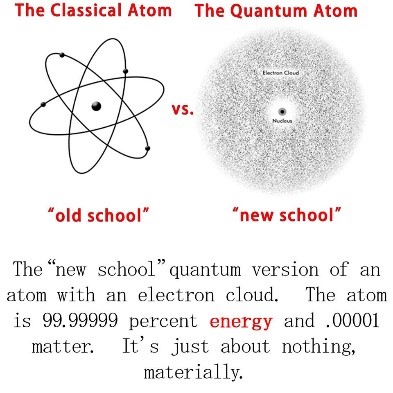
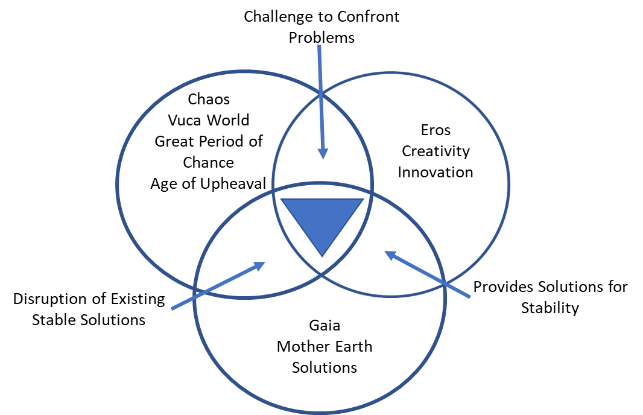
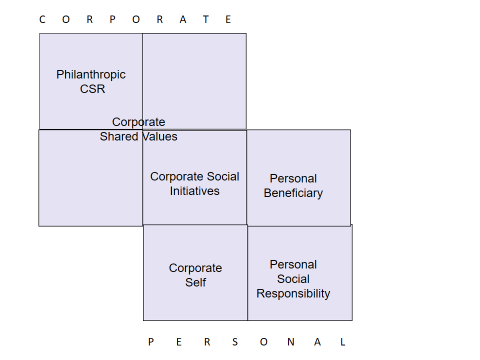
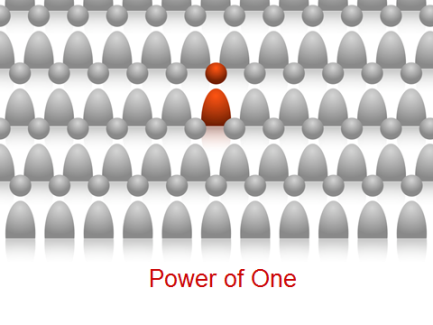
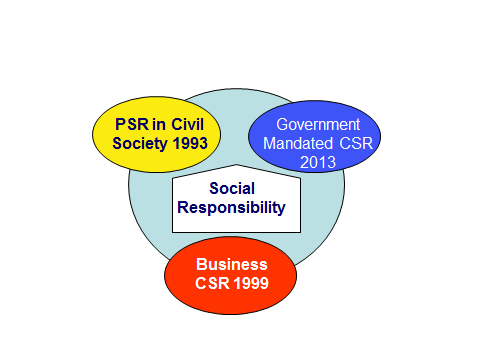
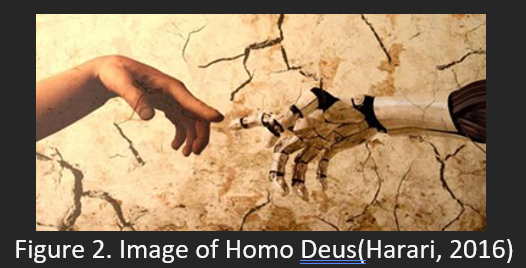
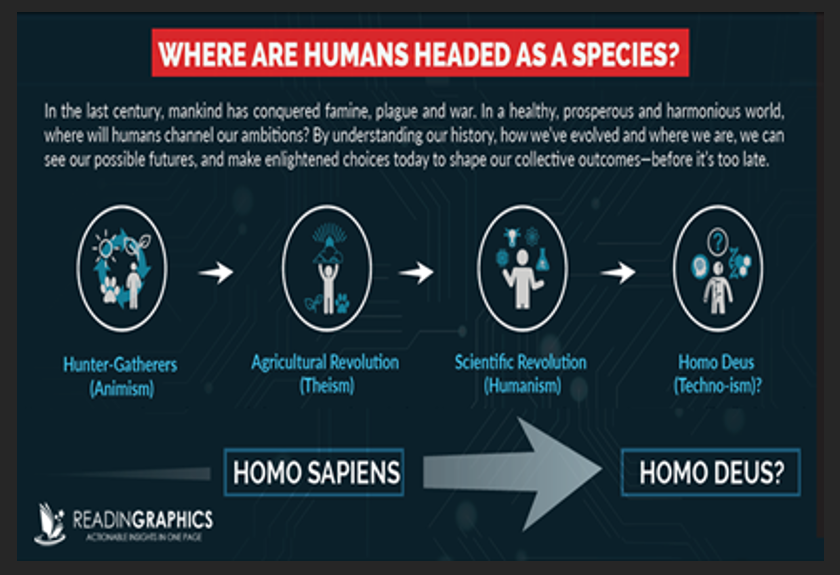
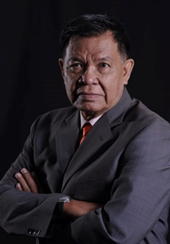




Leave a Reply
You must be logged in to post a comment.